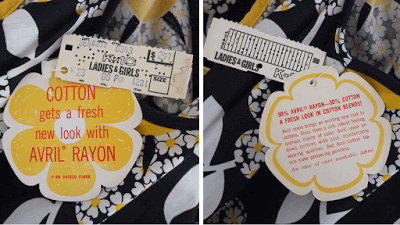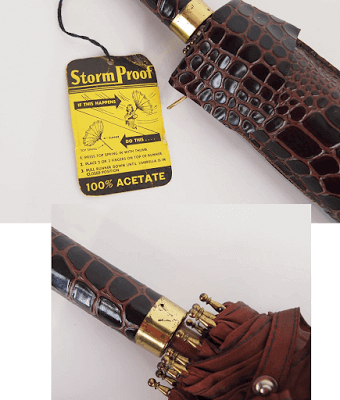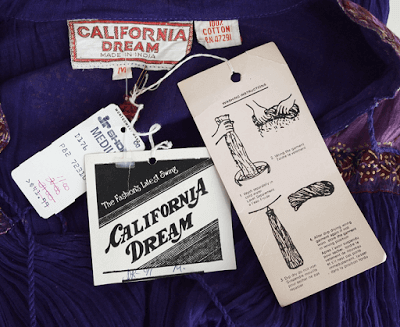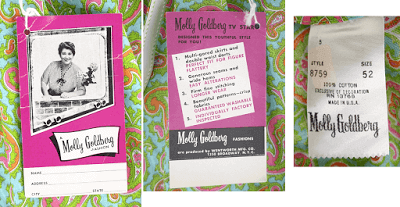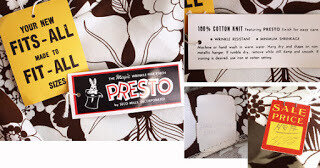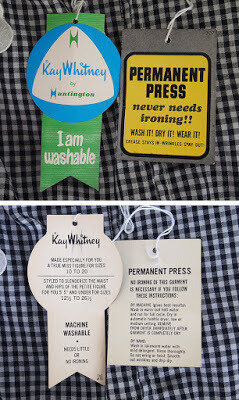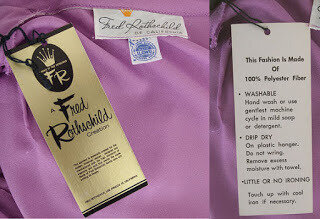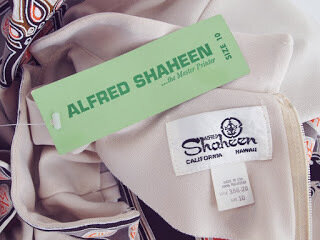No, it’s not the Grateful Dead in concert, the depths of a bear market, or a no-longer-with-us cow—at least not in this context.
If you shop for vintage fashion online, you will have run across the word deadstock, and maybe wondered about its meaning.
According to Collins English Dictionary, deadstock is “the merchandise or commodities of a shop, etc., that is unsold and generating no income.” Some dictionaries separate the word (dead stock), others do not include the term at all. It is, apparently, a business term that has crept into the general lexicon.
If it sounds pejorative, it’s because that’s its history: Items that couldn’t be or weren’t sold were “dead” to the seller, needing to be stored and of relatively little value. These items would sell for a song if at all.
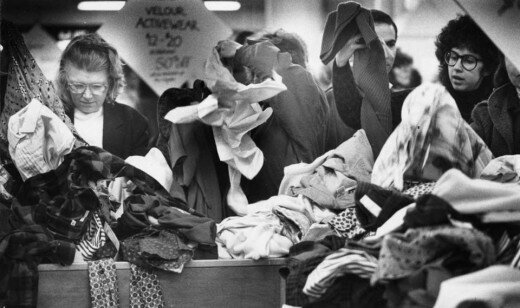
Filene’s Basement, 1970s. source: toughnickel
Then came eBay and lots of people started looking for the words to describe a vintage (or at least not new) item that was apparently unused. Other terms that surface often:
•New Old Stock (usually abbreviated NOS)
•With Tags
•Unused
•Virgin
Now you know where this is headed: Deadstock is nothing like a pejorative when associated with vintage fashion! Who wouldn’t want to be the first wearer of some vintage finery? It is the livest of the live!
Notice that I haven’t mentioned the term mint condition? To be mint, an item has to be in a state as if it had just come off the assembly line—like new. So many items that still have tags were not stored well or in some way show signs of their age. I’ve noted rust stains from hangers, sun fading, musty odors, dusty hemlines—even coffee splatters and insect holes. Vintage in mint condition is a bit rare.
I am fortunate to come across unused vintage fashion pieces now and then. So often they come to me in groups because one woman will have collected a number of items that she didn’t wear. She might have bought several of a single great piece because she loved it, then didn’t get around to wearing the alternates. Maybe she went to a sale and purchased more than she needed. Maybe she bought the size she hoped she’d achieve. For whatever reason, some people seem to have collected items that they did not use.
One of the greatest joys of finding deadstock vintage is seeing the hangtags and labels. These can give original store names, prices, sizes, fabrics and fabric care—not to mention the artwork!
Written by Maggie Wilds/denisebrain
